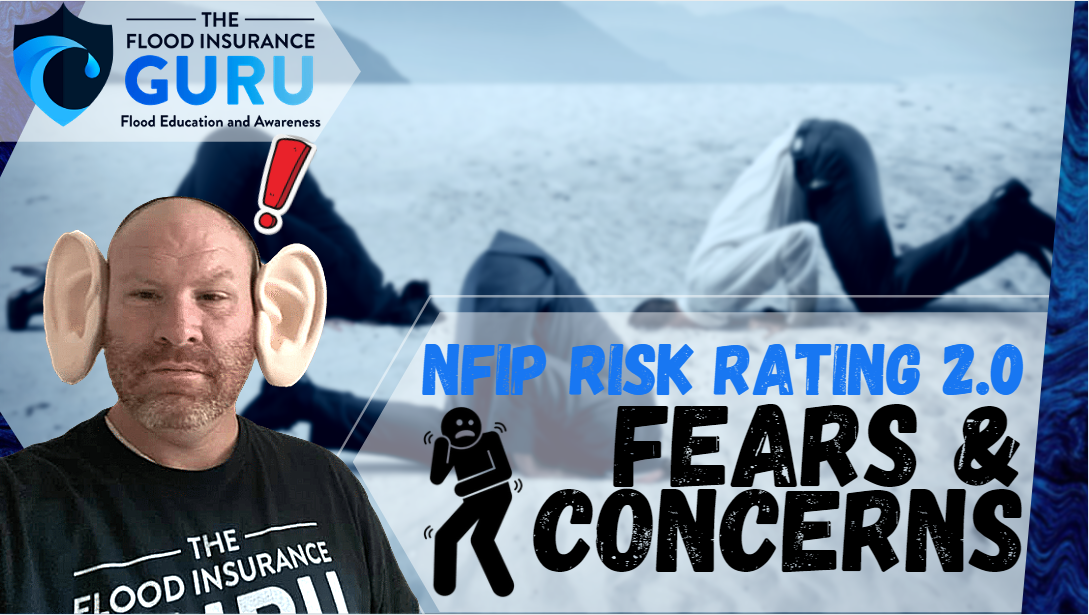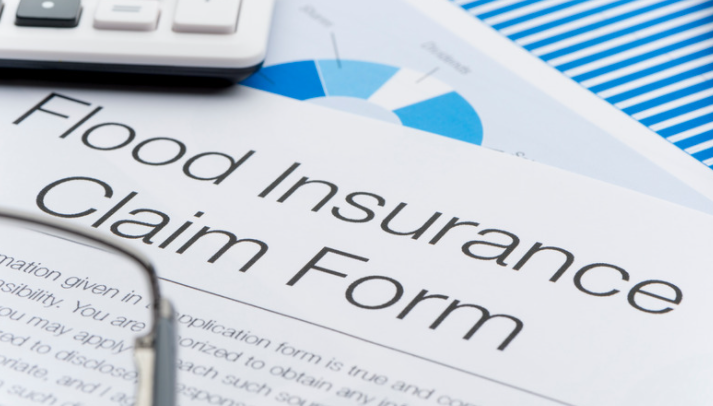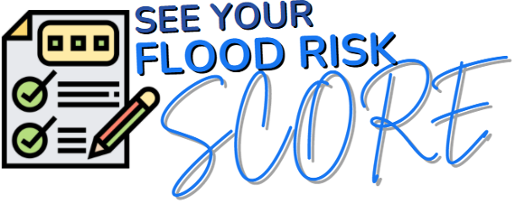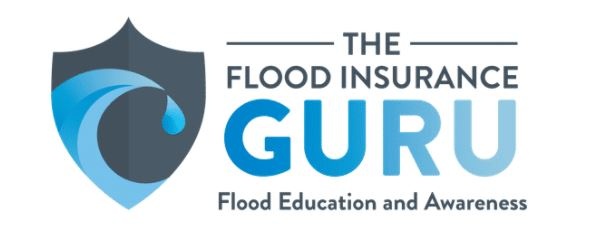NFIP Risk Rating 2.0: Fears and Concerns of Flood Insurance Purchase
October 9th, 2021
5 min read
By Chris Greene

We're just a week away from the first phase of the new federal flood insurance program with the Federal Emergency Management Agency (FEMA) and the National Flood Insurance Program (NFIP). The new Risk Rating 2.0 will impact properties across the country when it comes to flood insurance rates.

This new program may also bring changes not only for the flood insurance from the federal government but also the private insurance companies. It's natural to expect that a lot of property owners and consumers find anxiety, fear, and concerns with the new program.
What are these concerns?
Rate Increase
One of the biggest fears and concerns is about flood insurance rates increase with this new program.
There's a bit of misconception coming towards this specific concern. Although we're expecting some increase with the rates since there will be changes to the flood risk variable or how your rates are calculated, it's not true that everyone will get a very big increase.
Like we've covered in our previous blog, this new program is most likely to cause some increase however this is mostly due to the fact that insurance premiums will be based on a lot of variables other than flood zones.

Generally, we can expect that one of the biggest variables that may cause your rate to increase is property values. This is just one of the new things coming into play when it comes to your rate and it will fall as the costs to rebuild whatever flood damage happened to your property.
If you have a cheaper or smaller property then this could really help your case and get that rate decrease with your insurance with FEMA and the NFIP.
Will Risk Rating 2.0 cause an increase in the cost of insurance once it takes effect on October 1st? Well, there's no accurate answer however it's important to keep in mind that you will only be paying for the policy that matches your coverage and flood risk.
To further understand the new rating structure let's do a quick recap of the things coming to FEMA and the NFIP Risk Rating 2.0
Everything Risk Rating 2.0
This new program's also called equity in action as the main goal that it has is to provide a more accurate insurance cost when it comes to FEMA and the NFIP through rates and/or premiums. This goal will be achieved by using multiple flood risk factors or what is also called flood risk variables.
It's important to highlight that Risk Rating 2.0 will no longer use flood zones that are seen through flood maps as a basis for the rating. This means that being in a high-risk flood zone like Flood Zone A will only see flood insurance mandatory from a regulatory standpoint.
Here are the things that will be used to finalize your flood insurance rates with FEMA and the NFIP:
- Types of flood
- Flood frequency
- Distance to water or sources of flood risk
- Cost of rebuilding the insured building
- First-floor height and building elevation
- Flood mitigation measures on the property
- Prior flood insurance claims
Other than the rating system, flood coverage with FEMA and the NFIP will stay the same at the time of writing. Building coverages will max out at $250,000 for residential property and will only go up to $500,000 if it's a commercial property. When it comes to contents coverage or personal property coverage, both will max out at $100,000.
So far, there will be no additional coverages like replacement costs or loss of use. Additional living expenses will only kick in if there's a presidential declaration. The other coverage you may get is the Increased Cost of Compliance (ICC) which isn't really included in a standard flood insurance policy.
Claims Process
The second thing that most property owners will be surely concerned about is the flood claims process.
Well, the good news is that there's not much change with the flood claims process itself with FEMA and the NFIP. When it comes to completing a flood claim after a flood, FEMA will be using the same format as they are using before.

You can either call FEMA's hotline or visit their website to file a flood insurance claim after a flood. You still have to make sure that you follow their guidelines such as reporting the damages to an insurance agent or insurance company, documenting the flood loss in full detail, doing the necessary clean-up to avoid further damage, and meeting with an adjuster before you can actually have your insurance payout.
Generally, if this isn't your first rodeo from filing a claim with FEMA and the NFIP, this can be very easy. If it's your first time, there's not really much of a change to its current format. You can definitely get an informed decision when it comes to these claims from us, your agent, or your insurance company.
Mortgage's Flood Policy Rejection
Now, let's move into something that many people don't really talk about and that's the fear that your mortgage lender might not accept your flood insurance policy.
You see, when it comes to mortgage lenders, they do have certain standards that may lead to your policy getting rejected overall. Government loans like USDA loans and VA loans can be one of these loan types that most mortgage lenders reject. This means if you're doing a government loan, the mortgage lender may reject your policy due to the said loan and this is can really be concerning since it mostly falls into the lender's discretion.

There are also cases where your mortgage will not directly reject your policy, but they will have to ask you to make sure that you get more coverage for the property. This is especially the case for a policy that came from the private market or a private insurance company where coverage is more flexible than FEMA's or the NFIP's.
You can also have your policy reject if your mortgage lender deems that it won't be needed. Maybe this is because your property is not in the special flood hazard area (SFHA) or a high-risk zone or was removed from the SFHA due to the letter of map revision (LOMR).
House Closing and Policy Refund
Lastly, what if you're trying to buy this house and you already completed the flood insurance purchase however the closing didn't go through. Your policy will no longer be valid since it's set for that specific property. The biggest question you will have is that "can I get a refund?" and we totally understand since that's a lot of money going nowhere.
The simple answer is yes, you will get your refund. Generally, in this type of closing where a property closing didn't happen (also known as the Valid Cancellation Reason Code 7 or simply Code 7) in FEMA's books, you will be able to get a full refund for the premium including fees and surcharge.
It's important to note however that the cancellation and refund will only go through if FEMA received the cancellation request within 1 year of the new flood policy effective date. All you need to do is to provide the complete documentation that the closing didn't go through and the verification letter which you can also get from FEMA.
Things To Think About
At the end of the day, this update will not get a final verdict since it hasn't even started yet. FEMA and the National Flood Insurance Program (NFIP) may also add more as the Risk Rating 2.0 goes live. The real thing we should be more concerned about is making sure that you are protected especially during hurricane seasons.
We've seen how devastating these natural disasters can be, so not getting that chance to bounce back from all the loss and damages will be the bigger disaster than the actual flooding itself.
If you have any questions on understanding the level of risk for floods your property has, what the Risk Rating 2.0 means for you, what your flood insurance options are, or anything about floods and flood insurance, click below to reach us.
Remember, we have an educational background in flood mitigation which lets us help you understand flood risks, your flood insurance, and mitigating your property long-term.




